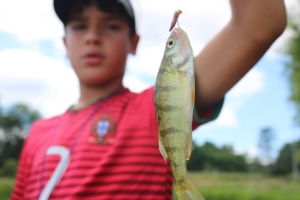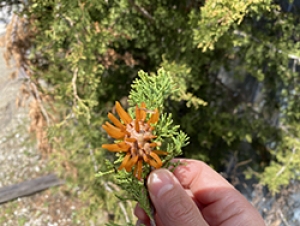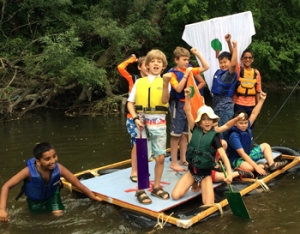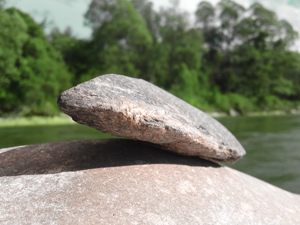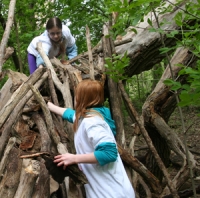

Miguel Santos
Miguel Ángel Santos García-Puente was born in Valdeobispo, Spain. He earned his Bachelor’s Degree in English and French from the University of Salamanca, a Master’s Degree in Education while teaching Spanish at Carthage College in Kenosha, and a Master’s Degree in Spanish Literature and Linguistics while teaching Spanish at UWM. He worked as a Dual Immersion Elementary Teacher in Fairfield, California, and volunteered as a counselor at several YMCA camps in the United Sates. Miguel is a Bilingual Environmental Educator at the Riverside branch where he is able to utilize his diverse teaching experience to foster environmental literacy and raise both local and global awareness.
Just a fish… Or not!
Camper Noah Hammouri caught his first fish ever at Fishing Camp. Trivial... or not!
When Noah reeled in his first fish on the first day of camp, he shouted my name and ran for joy toward me for a double high five as if he had just won the NBA finals. I had hardly known him for a few hours, and until that moment, he had been on the quiet side. I celebrated his success with equal or even higher enthusiasm as if he was my younger sibling.
After the Rain Comes the Sun
At first sight, this may look like a humongous macroscopic mutation of the feared virus. However, it is a gall on the cone of a red cedar tree (Juniperus virginiana).
Galls are abnormal growths that occur in plants and trees when they get attacked by insects, fungi, bacteria or viruses.
You Feel Mighty Free and Easy and Comfortable on a Raft
Last summer the Urban Ecology Center held its first Engineering for Kids Summer Camp for third and fourth graders. The entire experience at this camp completely exceeded my expectations. The campers built a raft with their own hands out of recycled wood, inner tubes, ropes and milk jugs and on their last day of camp they embarked on a big adventure - gliding their raft down the Menomonee River.
I felt intimately connected to this project as it reminded me of my childhood. My friends and I used to build rafts with driftwood in the Alagón River Reservoir, Spain. It was a passion I could share with my campers.
Not Just A Rock
The morning sunlight shimmered on the rippling surface of the river. It was a beautiful day in late fall as second graders hiked along the Menomonee Valley trails. The excitement of the kids grew as the trail got more and more covered by the trees. I realized that the border between them and the natural world had started to break down when I heard a few “wows” for a Blue Heron that flew by and a salmon going up the river to spawn. You could sense the connection one student had as she held an improvised walking stick.
Build It!
“Get out your hard hat! It’s time to put some materials to the test. Stretch’em, soak’em, crush’em – use what you learned to construct something (a bridge, a bird nest or a building) to solve a problem.”
This is the description for one of our school programs for second graders. We use the Three Little Pigs story as a reference. Students get to know about the properties of certain materials, then they are divided into groups to build up sturdy enough structures out of cups so as to withstand the wolves’ huffs and puffs.
Copyright © 2023 The Urban Ecology Center

